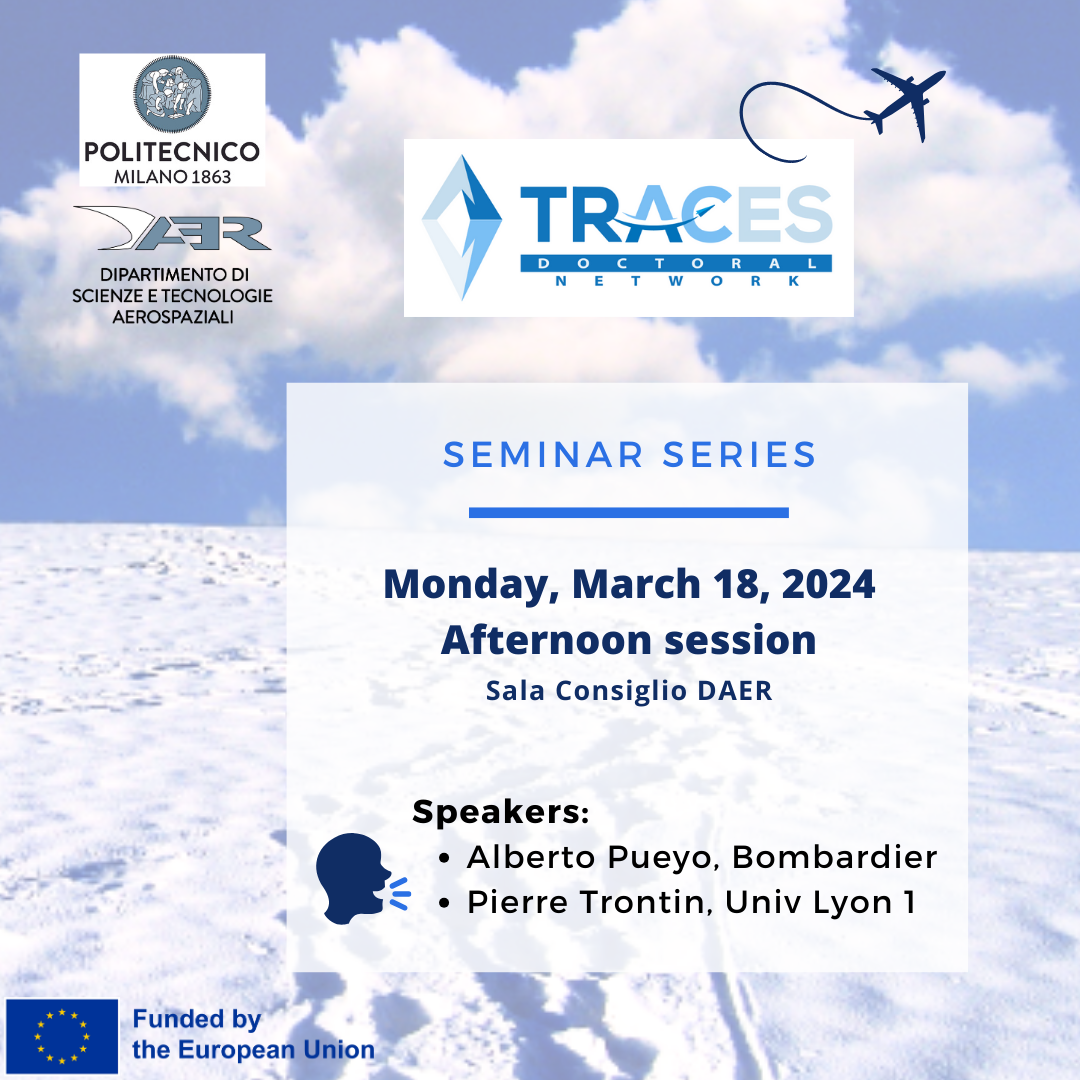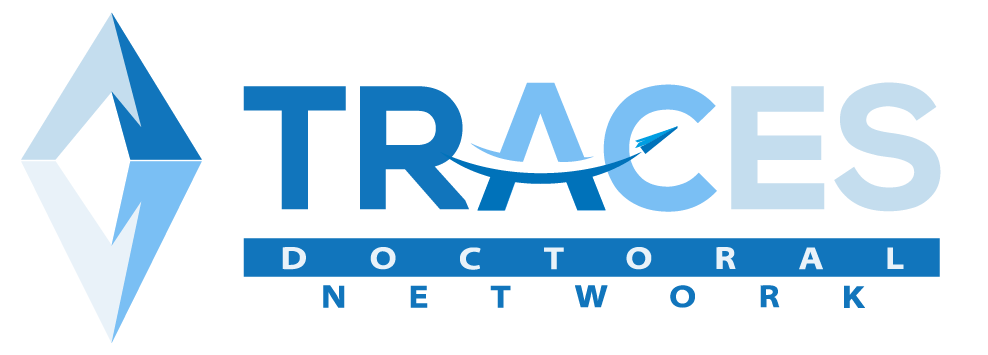by admin
Share
Share

The TRACES seminar series has been launched!
Two seminars will be organized in the afternoon of Monday, March 18, in the Sala Consiglio of the Department of Aerospace Science and Technology, at Politecnico di Milano.
The agenda is:
• 15:00 “Hazardous Icy Skies: Challenges in Aircraft Design and Certification” by Lead of the Icing Aerodynamics group at Bombardier
• 16:00 “Numerical simulations of two-phase flows: from a statistical approach for snowflake transport in the context of in-flight icing, to direct numerical simulations of the ribbing instability in the rotating drag-out problem” by Prof. Pierre Trontin, Professor at Université Lyon 1, Fluid Mechanics and Acoustics Laboratory (LMFA)
The seminars will be broadcast via WebEx, at https://politecnicomilano.webex.com/meet/alberto.guardone
Hazardous Icy Skies: Challenges in Aircraft Design and Certification
Monday, March 18, at 15:00
Alberto Pueyo, Lead of the Icing Aerodynamics group at Bombardier.
Abstract:
In-flight icing is a very serious hazard. For many years, it has been one of the greatest transportation safety issues of the National Transportation Safety Board. Aircraft, engine, and helicopter manufacturers spend great effort and significant amounts of money in making their products safer when operating in icing conditions. Dr. Pueyo will offer an introduction to the in-flight icing problem, followed by an industrial perspective of the activities and tools involved in the design and certification of aircraft operating in icing conditions. The last part of his presentation will address some of the challenges encountered in the simulation of icing physics and icing aerodynamics.
Speaker’s bio:
Dr. Alberto Pueyo graduated with a combined bachelor’s and master’s degree in aerospace engineering from Universidad Politecnica de Madrid (1986). He joined Pratt & Whitney before returning to university. He obtained a master’s degree in Icing Simulation from Ecole Polytechnique de Montreal (1992) and he received his PhD in Computational Fluid Dynamics (CFD) from the Institute for Aerospace Studies of the University of Toronto (1998). He received the G. N. Patterson Award for his thesis on Newton-Krylov convergence acceleration methods.
He joined Bombardier in 1999 as Principal Investigator in Aerothermodynamics. Since then, he has developed vast experience in icing simulation, wind tunnel testing, and aerodynamic effects of icing. Since 2008 he is the Lead of the Icing Aerodynamics group and the icing R&D work at Bombardier. He also teaches regularly in the areas of icing and aerodynamics.
Numerical simulations of two-phase flows: from a statistical approach for snowflake transport in the context of in-flight icing, to direct numerical simulations of the ribbing instability in the rotating drag-out problem
Monday, March 18, at 16:00
Pierre Trontin, Professor at Université Lyon 1, Fluid Mechanics and Acoustics Laboratory (LMFA)
Abstract:
Multiphase flows involving several immiscible phases, such as a suspension of drops or solid particles, a plume of bubbles, the impact of a jet, the disintegration of a liquid sheet, the runback and wetting of a film on a wall, or the accretion of ice, are involved in many sectors. These flows are by nature multi-physical, coupling many effects such as dynamics, heat and mass transfers, or fluid/wall interactions. In addition, they are multi-scale, with no obvious separation between large and small scales. In this context, the use of numerical simulations for model derivation is presented for two different applications. Firstly, in the context of in-flight aircraft icing, statistical models are proposed for tracking non-spherical frozen particles (typically ice crystals or snowflakes) and characterizing their trajectory and heat and mass transfers. Then, on a smaller scale and in a different context, direct numerical simulations of two-phase flows with a sharp interface, in addition to experiments, are proposed to describe ribbing patterns in the rotating drag-out problem of a wheel in a liquid-filled tank.
Speaker’s bio:
Pierre Trontin graduated from ISAE-Supaero in 2006. After defending his PhD thesis in 2009 at Onera Toulouse on the numerical simulation of interfacial two-phase flows, he was hired as a research engineer at Onera. He worked for 10 years in the Multi-Physics Department for Energetics (DMPE), notably on the modeling of in-flight icing. Since 2021, he has been a Professor at Lyon 1 University and the Fluid Mechanics and Acoustics Laboratory (LMFA). He works on the numerical simulation of two-phase flows.

